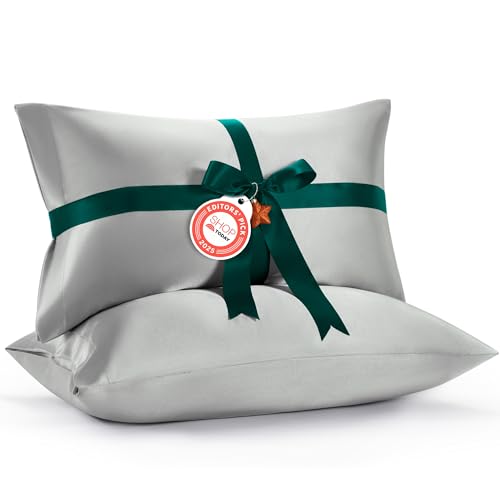So, you’ve decided to spruce up your outdoor space with some beautiful pavers. But have you ever wondered what type of sand you should use to fill the gaps between them? Well, we’ve got you covered! Choosing the right sand for your pavers is crucial not only for aesthetics but also for the longevity and stability of your hardscaping project.

When it comes to selecting the perfect sand for your pavers, there are a few key factors to consider. From polymeric sand to regular jointing sand, each option has its own set of benefits and considerations. In this article, we’ll explore the different types of sand available and help you determine which one will best suit your needs.
Understanding Paver Sand: Its Purpose and Types
The Role of Sand in Paver Installation
When it comes to creating durable and visually appealing outdoor spaces with pavers, the choice of sand for filling the joints is crucial. Sand plays a vital role in securing the pavers in place, preventing weed growth, and providing stability to the entire hardscaping structure. By filling the gaps between pavers with sand, we ensure that the surface remains even and can withstand varying weather conditions without shifting or becoming uneven.
Comparing Sand Types for Pavers
In the world of paver installation, we encounter two main types of sand: polymeric sand and regular jointing sand. Let’s delve into the characteristics of each type to understand their distinct advantages and applications.
- Polymeric Sand:
- This high-tech sand contains additives that, when activated by water, create a binding agent.
- It sets hard, similar to mortar, providing a strong bond between pavers.
- Polymeric sand resists erosion, inhibits weed growth, and offers enhanced durability, making it ideal for high-traffic areas or regions with frequent rain or wind.
- Regular Jointing Sand:
- Made from natural quartz or silica, this traditional sand is an economical choice for paver joints.
- It allows for flexibility and drainage, accommodating slight shifts in the pavers.
- Regular jointing sand requires periodic refilling due to erosion, but it provides a more natural aesthetic and is easier to work with during installation.
By understanding the role of sand in paver installations and comparing the different types available, we can make informed decisions that align with the specific requirements of each hardscaping project.
Key Factors in Choosing the Right Sand for Your Pavers
Grain Size and Its Importance
Selecting the appropriate grain size of sand is crucial for the stability and longevity of your paver project. We recommend using fine-grained sand for narrow joints between pavers, as it provides better compaction and prevents sand washout. On the other hand, coarse-grained sand is ideal for wider joints, allowing for adequate drainage and reducing the risk of erosion. Matching the grain size to your specific paver design ensures a solid foundation and minimizes maintenance efforts in the long term.
Durability and Weather Resistance
When it comes to durability and weather resistance, the type of sand you choose can significantly impact the lifespan of your paver installation. Opting for polymeric sand enhances the strength and stability of the joints, making them less susceptible to erosion from water or harsh weather conditions. This advanced formula is designed to harden when exposed to moisture, creating a secure bond that withstands the test of time. For areas with high foot traffic or frequent exposure to the elements, investing in polymeric sand can be a wise choice to ensure the longevity of your paver surface.
Aesthetics and Color Options
Incorporating the visual aspect into your paver project is essential for achieving the desired aesthetic appeal. While traditional jointing sand blends seamlessly with the natural look of pavers, polymeric sand offers a range of color options to complement or contrast with your paving stones. By selecting a sand color that harmonizes with your overall design scheme, you can elevate the visual impact of your outdoor space and create a cohesive and polished appearance. Whether you prefer a subtle enhancement or a bold statement, choosing the right sand color adds another dimension to the beauty of your paver installation.
Popular Types of Sand Used Between Pavers
Polymeric Sand: The Modern Choice
When it comes to selecting the right sand for filling gaps between pavers, polymeric sand stands out as the modern choice. Unlike traditional jointing sands, polymeric sand contains additives that, when activated by water, form a binding agent that helps lock the pavers together. This unique feature makes polymeric sand an excellent option for enhancing the stability and longevity of hardscaping projects.
Concrete Sand: The Traditional Pick
Concrete sand, a tried-and-true option, has long been a favorite among landscape designers for filling paver joints. This sand type, composed of finely crushed particles, offers good drainage and creates a solid base between pavers. While it may not have the binding properties of polymeric sand, concrete sand is a reliable choice for projects where traditional aesthetics and functionality are prioritized.
Joint Stabilizing Sand for Added Benefits
In addition to polymeric and concrete sand, joint stabilizing sand provides added benefits in paver installations. This specialized sand variety is engineered to harden upon wetting, helping to lock pavers in place and prevent weed growth. Its stabilizing properties make it a valuable option for areas subjected to heavy foot traffic or inclement weather conditions, ensuring the longevity and durability of the hardscape design.
By considering the unique characteristics and benefits of each sand type, we can make informed decisions to enhance the structural integrity, aesthetics, and longevity of paver installations.
How to Properly Apply Sand Between Pavers
Preparing the Paver Surface
Before applying sand between your pavers, it’s crucial to prepare the surface properly to ensure a durable and long-lasting result. Start by ensuring that the paver joints are clean and free of debris. We recommend using a stiff brush or blower to remove any dirt, weeds, or other unwanted materials from the gaps. This step is essential as a clean surface allows the sand to fill the joints effectively, providing stability and preventing weed growth. Additionally, make sure the paver surface is dry before you begin the sand application process.
The Sand Application Process
When applying sand between pavers, the technique is as vital as the sand itself. Begin by pouring the sand over the paver surface, ensuring that it fills the joints evenly. Use a broom to sweep the sand into the gaps, making sure it reaches the bottom to secure the pavers firmly. Once the joints are filled, use a compactor to gently tap the pavers, allowing the sand to settle further and create a solid, stable base. Repeat the sweeping and compacting process until the joints are completely filled and the sand is level with the paver surface.
Tips for Ensuring Longevity
To maximize the longevity of your paver installation with sand joints, consider applying a sealer after the sand has settled. A quality sealer helps lock the sand in place, preventing erosion and weed growth while enhancing the overall stability of the pavers. Additionally, regular maintenance is key to preserving the integrity of the sand-filled joints. Periodically inspect the paver surface for any gaps or erosion, and top up the sand as needed to maintain a solid and secure foundation. By following these tips, you can ensure that your paver installation remains attractive, stable, and weed-free for years to come.
Maintaining Your Paver Sand Over Time
Regular Cleaning Tips
To keep your paver sand looking fresh and in good condition, regular cleaning is essential. We recommend using a broom or a leaf blower to remove debris, dirt, and any organic materials that may accumulate on the surface. By sweeping the pavers regularly, you can help prevent weed growth and maintain the overall appearance of your hardscaping project. It’s a simple task that can significantly impact the longevity and aesthetics of your paver sand joints.
When to Reapply Sand in Paver Joints
Knowing when to reapply sand in your paver joints is crucial for the stability and durability of your hardscaping installation. Over time, factors like foot traffic, weather exposure, and natural settling can cause the sand to erode or wash away. As landscape designers, we recommend checking your paver joints periodically to assess the condition of the sand. If you notice gaps or depressions forming between the pavers, it’s a telltale sign that it’s time to reapply sand. By maintaining proper sand levels in the joints, you can ensure the structural integrity and longevity of your paver surfaces.
Conclusion
Choosing the right sand for your paver projects is crucial for stability and longevity. From polymeric to joint stabilizing sand, each type plays a key role in securing pavers and preventing weed growth. Proper application techniques, such as surface preparation and compaction, are essential for a durable base. Regular maintenance, including cleaning and reapplying sand when needed, is vital for preserving the integrity of your paver installations. By understanding the importance of selecting the correct sand and maintaining it over time, you can ensure that your hardscaping projects stand the test of time.
« Unveiling the Ultimate Secret to Banish Moss on Pavers Forever Unveiling the Ultimate Paver Fillers for Flawless Outdoor Spaces »
















